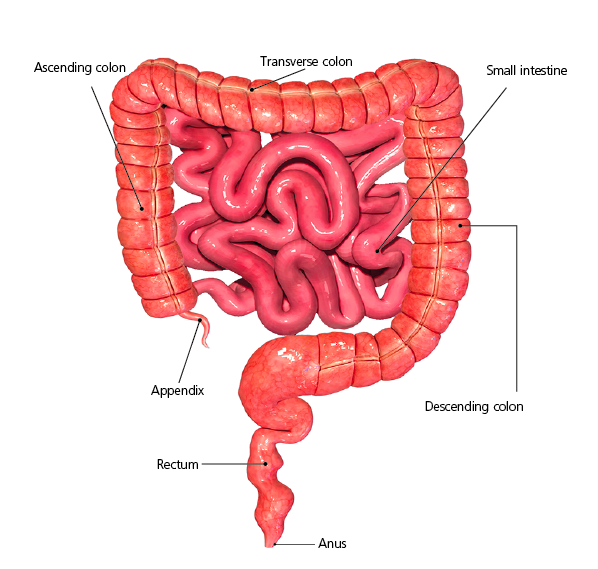The gastrointestinal (GI) tract is a tube of muscle that runs from the mouth to the anus. It is generally referred to in two parts: the upper GI tract, which includes the stomach and the oesophagus, and the lower GI tract, which includes the intestines, rectum and anus. The lower GI tract is often referred to as the bowel(s).

In the large intestine, or colon, water and salts are absorbed from waste matter to create faeces. Millions of natural bacteria live in the colon, helping to break down undigested food, neutralising harmful substances and creating vitamin K, which is essential for blood clotting. Muscular, wave-like movements called peristalsis push the contents of the colon down towards the rectum, triggering the need for a bowel movement, when faeces are expelled from the body through the anus.
Everyone has different bowel habits, varying from needing to go to the toilet several times a day to as little as three times a week.
Fast fact
The small intestine is approximately six metres long.
